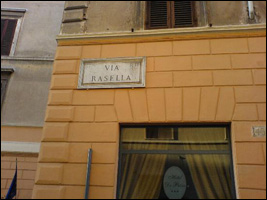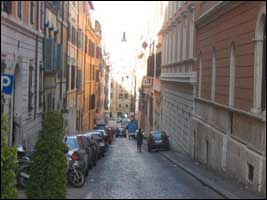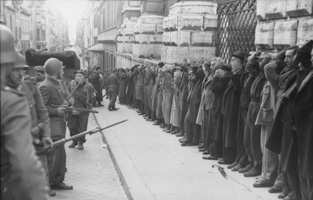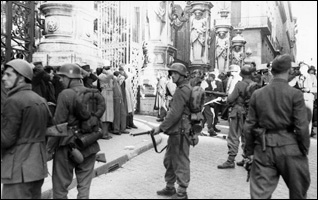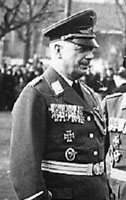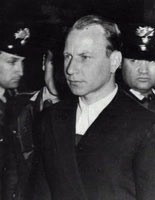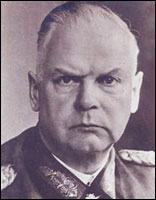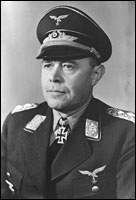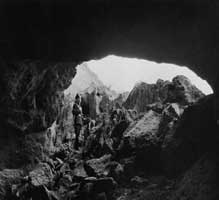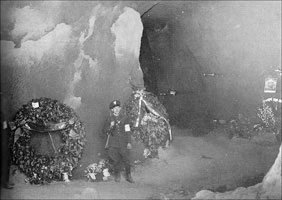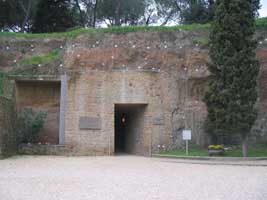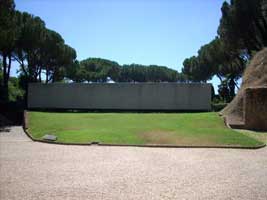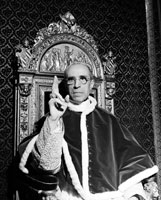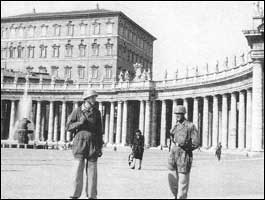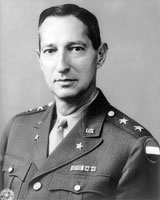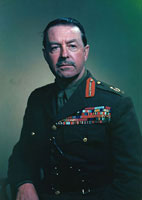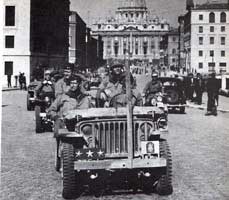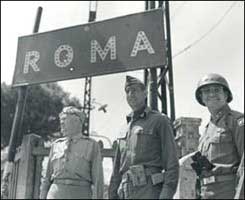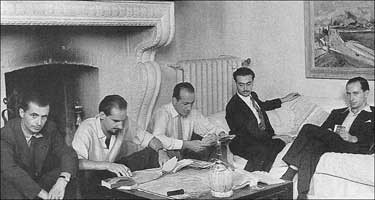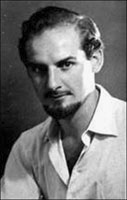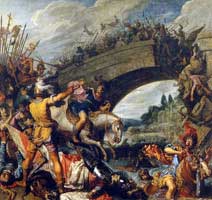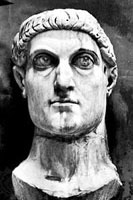| Massacre
in Rome!! |
On March 25, 1944, the newspapers in Rome published a release from the state news agency. It was issued by the German commander of the city at 10:55 PM. the night before:
During the afternoon of March 23, 1944, criminal elements carried out an attack, by throwing bombs at a German Police column which was passing along the via Rasella. In consequence of this attack, 32 German policemen were killed and several wounded. This vile ambush was carried out by Badoglio-Communist elements. Investigation is still being carried out to clarify up to which point this criminal act is to be attributed to Anglo-American incitement.
The German Command is firmly determined to put an end to the activity of these heartless bandits. No one shall sabotage unpunished the renewed Italo-German cooperation. The German Command, therefore, has given orders that for every German killed, ten Badoglio-Communist criminals will be shot. This order has been carried out. (Portelli, The Order Has Been Carried Out, p.1).
By the time this announcement appeared in the Rome newspapers, 335 Italian "partisans" had been taken to the Ardeatine Caves just outside Rome and brutally shot in the back of the head by the Gestapo.
|
The extremely sophisticated ambush was carried out by 16 "partisans" with a huge bomb hidden in a rubbish cart. 28 Gestapo policemen were immediately sent to meet their Maker, while another 4 would die later. 2 civilian bystanders were killed, one of whom, Piero Zuccheretti, was an eleven-year old boy.
All of the partisans who were involved in the ambush escaped unharmed. The deaths of the 32 Nazis did not shorten the war by a single day.
|
The Germans immediately surmised that such a sophisticated ambush could only be the work of the British. General Kurt Mälzer, commanding the Gestapo in Rome, wanted to kill all the people on the spot and the streets dynamited; but cooler heads prevailed. Mälzer immediately contacted his superior, Field Marshall Albert Kesselring, who contacted Hitler.
Hitler ordered that 10 partisans should be shot for every dead German and the order was to be executed within 24 hours!!
|
Hitler ordered 10 partisans killed for every dead Gestapo soldier and the executions were to be carried out immediately.
|
No time was given to find the real perpetuators of the ambush. From a list of prisoners held by the Gestapo, 335 names were chosen, the prisoners were bound, loaded on trucks, and taken to the execution site in a Roman suburb.
The massacre took place in the Ardeatine Caves!!
The massacre was perpetrated without prior public notice in what was then a little-frequented rural suburb of the city, inside the tunnels of the disused quarries of pozzolana, near the Via Ardeatina. A total of 335 Italian prisoners were taken, 5 in excess of the 330 called for. On March 24, led by SS officers Erich Priebke and Karl Hass, they were transported to the Ardeatine caves in truckloads and then, in groups of 5, put to death inside the caves.
|
A few days after the execution, Romans noticed a terrible stench emanating from the caves. The Germans sealed the caves tighter and ordered that garbage be dumped in front of the caves to hide the smell.
After the liberation of Rome by the U.S. in June 1944, the caves were opened and the terrible secret was finally revealed to the world.
|
Subsequently, the Ardeatine Caves site (Fosse Ardeatine) was declared a memorial cemetery and national monument open daily to visitors. Every year, on the anniversary of the slaughter and in the presence of the senior officials of the Italian Republic, a solemn State commemoration is held at the monument in honor of the fallen.
Pope Pius XII blamed the partisans for the massacre!!
This massacre was not done in a corner but in the Pope's own diocese of Rome. The Vatican was a famous listening post during the war, and Rome was a nest of spies and informers.
|
The day after the massacre, the Vatican issued a press release blaming the partisans for the massacre:
When facing such events, any honest soul is deeply pained in the name of humanity and of Christian sentiments. On one hand, thirty-two victims; on the other, three hundred and twenty persons sacrificed for the culprits who have escaped arrest. Standing apart from and above the contention we invoke from these irresponsible parties the respect for human life, which they have no right ever to sacrifice; and the respect for innocence, which is fatally the victim; from those in positions of responsibility, we ask that they be conscious of their responsibility toward themselves, toward the lives they are to safeguard, and toward history and civilization. (Portelli, The Order Has Been Carried Out, p.2).
The full scale of the horrible massacre was not revealed until the U.S. liberated Rome in June, 1944.
The British versus the U.S. in the race for Rome!!
In 1944, a bitter rivalry developed between the British and the U.S. as to who would be the first to enter Rome after the defeat of the Nazis.
|
The U.S. 5th Army, commanded by general Clark, won the race for Rome, and entered the city on June 5, 1944. Unlike Churchill, the top U.S. commanders were not fanatical about the Italian Campaign. They viewed it as a sideshow and a waste of lives; but once committed, they were not about to let the British walk away with the lion's share of the spoils.
|
What a pity general Clark didn't put a gun to the head of Pacelli and order him to excommunicate Hitler. Better still, general Clark could have done the whole world a great favor by abolishing that nest of spies called Vatican City State!!
When one of general Clark's soldiers first saw the Colosseum he thought that the damage was caused by U.S. bombers:
It was on this day that a doughboy made the classic remark of the Italian campaign, when he took a long look at the ruins of the Colosseum, whistled softly, and said, "Gee, I didn't know our bombers had done that much damage in Rome!" (Clark, Calculated Risk, p. 344).
General Clark had a private audience with Pope Pius on June 8. After surviving 2 years of intense combat, he was almost killed in an airplane accident the following day. (Calculated Risk, p. 356).
The British had many good reasons for reaching Rome first. One of their spies, Peter Tompkins, actually masterminded the partisan attack on the Gestapo. Additionally, there was a mountain of incriminating evidence linking Mussolini to Churchill and MI6. Unlike Churchill, the top U.S. commanders saw the Italian Campaign as a sideshow and a waste of lives, but once committed, they were not about to let the British walk away with the lion's share of the spoils.
|
The OSS (Office of Strategic Service) was founded in 1941 by William ("Wild Bill") Donovan. It was just a cover for the British MI6. Tompkins spent many years in England before the war and he also spoke Italian fluently.
He planned the sophisticated ambush of the Gestapo with the partisans. Of course, Pope Pius blamed the Communists, and the ambush was a perfect opportunity to eliminate all the Italians who were opposed to Mussolini and Fascism.
The first British invasion of Rome occurred in 312 AD!!
Emperor Constantine was born in York, England, the son of Druidress Helena and a Roman tribune. After the timely death of his father, Constantinus Chlorus, he was proclaimed Emperor by his troops. Beginning in Britannia, he led an army of conquest across the Alps and laid siege to Rome.
This was revenge for the Roman invasion of Britannia by Claudius Caesar in 43 AD.
|
The year 313 AD can be considered the official beginning of the Latin Papacy, and Emperor Constantine can be considered the first Pope.
The division of the Roman Empire into East and West began in 380 with an edict of mad Emperor Theodosius commanding everybody in the Empire to believe in the myth of St. Peter at Rome.
Here is a copy of that edict :
It is our desire that all the various nations which are subject to our Clemency and Moderation, should continue in the profession of that religion which was delivered to the Romans by the divine Apostle Peter, as it hath been preserved by faithful tradition; and which is now professed by the Pontiff Damasus and by Peter, Bishop of Alexandria, a man of apostolic holiness. According to the apostolic teaching and the doctrine of the Gospel, let us believe the one deity of the Father, the Son and the Holy Spirit, in equal majesty and in a holy Trinity. We authorize the followers of this law to assume the title of Catholic Christians; but as for the others, since, in our judgement, they are foolish madmen, we decree that they shall be branded with the ignominious name of heretics, and shall not presume to give to their conventicles the name of churches. They will suffer in the first place the chastisement of the divine condemnation, and in the second the punishment which our authority, in accordance with the will of Heaven, shall decide to inflict. (Theodosian Code, Book XVI, The Catholic Faith).
No published text of the Roman Canon Law states specifically that BURNING ALIVE is the penalty for not believing in the myth of St. Peter in Rome. However, it is deeds and not words that count, and the Vatican has cremated millions of Christians alive for not believing this fable. (300 Christians were burned alive in England during the short 5 year reign of Bloody Mary Tudor).
The Christians in the East could never accept the myth of Saint Peter in Rome and so a split between East and West developed which still continues to this day.
As "Eternal Rome" approaches its end, everybody must decide if Christ alone is the Head of the Congregation . . . or the substitute who calls himself "Vicar of Christ."
Vital links
Massacre
in Rome starring Richard Burton |
References
In 1973, a movie based upon the massacre called Massacre in Rome was released starring Richard Burton and Marcello Mastroianni but the excellent movie did not win any Academy Awards!!
Clark, Mark. Calculated Risk: His Personal Story of the War in North Africa and Italy. George G. Harrap & Co., London. 1951.
Garibaldi, Luciano. Mussolini: The Secrets of His Death, Enigma Books, New York, 2004.
Hochhuth, Rolf. The Deputy: The Most Controversial Play of Our Time. Grove Press, New York, 1964.
Katz, Robert. Death in Rome. The Macmillan Company, New York, 1967.
Katz, Robert. The Battle for Rome: The Germans, the Allies, the Partisans, and the Pope. Simon & Schuster, New York, 2003.
Portelli, Alessandro.The Order Had Been Carried Out. Palgrave Macmillan, New York, 2003.
Tompkins, Peter. A Spy in Rome. Avon Books. New York, 1962.
Copyright © 2013 by Patrick Scrivener
